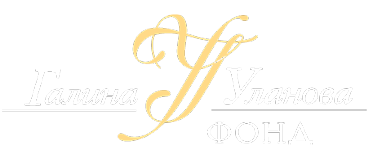Galina Ulanova (b. 26.12. 1909 / 08.11.1909, Petersburg), Soviet artist. People’s Artist of the USSR (1951). Twice Hero of Socialist Labor (1974, 1980). Galina Ulanova’s father, ballet dancer and director, mother, ballet dancer and teacher. In 1928 Ulanova graduated from the Leningrad Choreographic School (studied at her mother MF Romanova and AY Vaganova). In the same year she was admitted to the Leningrad Opera and Ballet Theatre company (later the Kirov Theatre). In 1944-1960 she was a soloist with the Bolshoi Theatre.
The art of Ulanova is absolutely, harmoniously. It is based on perfect correspondence, impeccable proportions of life and conditional. The artist generalized the concrete, poeticized life, elevated the ordinary. Ulanova’s art is characterized by the rare harmony of all expressive means and elements of choreography. Even at the beginning of Ulanova’s work, critics wrote about the complete unity in her performance of dance technique, dramatic play and plasticity. Without violating the strict purity of the lines of classical dance, she filled them with a trembling mood, gave grace and musicality to the simple, routine actions, and the most complex, technically sophisticated dance movements – the ease and naturalness of the human gesture. It seemed that in dance Ulanova’s movement is not interrupted, does not end, and as if gradually fading away, dissolving in the air. This special art of plastic slowdowns, slows down, fades, created a dancing carcass, pianissimo, subtle expressiveness. Ulanova did not emboss movements and poses, her dance poured easily, reflecting the slightest nuances of inner life of the heroines, shades of mood, sometimes elusive, unconscious mental impulses and movements.
Perfect classical dancer, Ulanova was not only a wonderful performer of Odette – Odile (“Swan Lake”, first in 1929, choreographer L.Ivanov – MI Petipa; 1934, edited by the choreographer Vaganova), Aurora (“The Sleeping Beauty”, 1929, choreographer MI Petipa), Mashi (“The Nutcracker”, 1934, choreographer V. Pavlovsky).I. Vainonen), the true creator of the image of Giselle (“Giselle” Adana. 1932, revived. A. Ya. Vaganova, 1944, L. M. Lavrovsky) on the stage, but also an artist who has proved the possibility of “translation” into the language of dance works of great poets, expressing a great philosophical content, the strength of human passions and experiences.
The art of Ulanova, a truly Russian actress who develops the principles and traditions of the Russian choreographic school, is imbued with humanism. Her heroines are characterized by special fragility, insecurity, feminine weakness, but at the same time unbending force, heroic tension of spirit.
Ulanova’s creative development is a gradual movement from lyrics to tragedy. Over time, in the fragile and defenseless Maria (“Bakhchisarai Fountain” Asafieva, first performed in 1934, choreographer RV Zakharov) appeared features of intransigence, in the tender Juliet (“Romeo and Juliet” Prokofieva, first in 1940, choreographer Lavrovsky; 1946, Bolshoi Theatre, choreographer the same; State Academic Bolshoi Apr. USSR State Ave., 1947) – passion and will. The peak of the tragic art of Ulanova – the scene of madness in the ballet “Giselle”. In the repertoire of the Ulanova Party: Komsomolki (“Golden Age” Shostakovich, 1930, choreographer VI Vainonen, LV Jacobson, VP Chesnakov), Solveig (“The Ice Maiden” to music by Grieg, choreographer VI. F. Lopukhov), the Tsar Maiden (“The Hunchbacked Horse” by Puny, 1932, choreographer MI Petipa, AA Gorsky, VF Lopukhov), Actresses (“The Flame of Paris”, 1934, Astafieva, choreographer VI Vainonen), Diana (“Esmeralda”, 1935, choreographer AY. Vaganova), Coralie (“Lost Illusions”, Astafieva, 1935, choreographer Zakharov), Raymondy (“Raymonda” Glazunova, 1938, choreographer Vainonen), Cinderella (“Cinderella” by Prokofiev, 1945, choreographer Zakharov, State Prize of the USSR, 1946), Parashi (“The Bronze Horseman” by Astafiev, 1949, choreographer the same), Tao Hao (“Red Poppy” by Gliera, 1949, choreographer L.M. Lavrovsky, State Prize of the USSR in 1950), Katerina (“The Tale of a Stone Flower” by Prokofiev, 1954, choreographer Lavrovsky), waltz, nocturne and music (“Chopiniana”), concert numbers: The Dying Swan to the music of Saint-Saëns ( staged by MM. The Dove of the World” to music by Rachmaninoff (choreographer K.Ya. Goleizovsky), “Elegy” to music by Schumann-Chopin (choreographer V.M. Chabukiani), Rubinstein’s Waltz (choreographer Zakharov), Liszt’s “Libestraum” (choreographer A.Shuisky), Tchaikovsky’s “Russian” (directed by Petipa).
Creator of images on a huge scale, embodying in the dance complex dramatic collisions, Ulanova has won worldwide recognition. She works as a ballet tutor at the Bolshoi Theatre. She perfects her art: ES Maximova, VV. Vasiliev, NV Timofeeva M. A. Sabirova, S. D. Adyrkhaev, LI Semenyaka, NL Semizorova, I. S. Prokofieva, N. Gracheva and others.
She took part in tours abroad. World fame came to Ulanova on her first tour of the Bolshoi Theatre to Great Britain in 1956 and the USA in 1959, where she played the roles of Juliet and Giselle. Ulanova’s outstanding achievements in the field of ballet have been particularly marked by the Lenin Prize (1957) and the USSR State Prize (1941).
